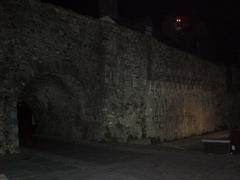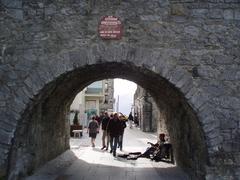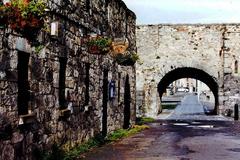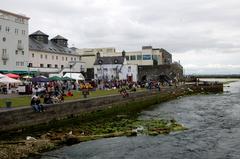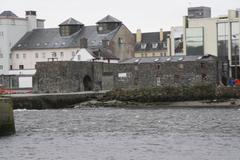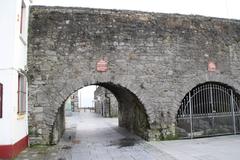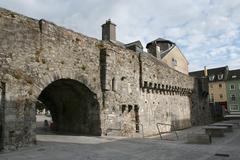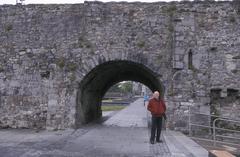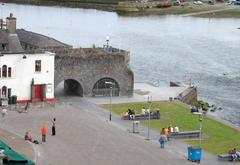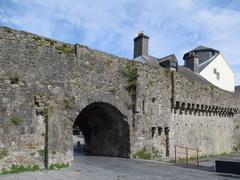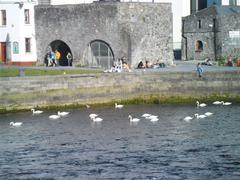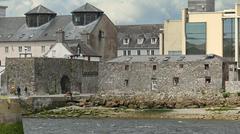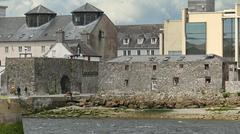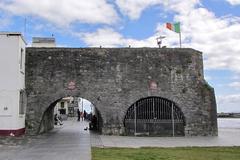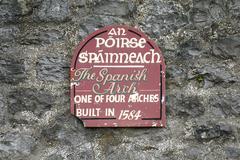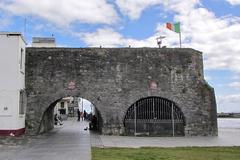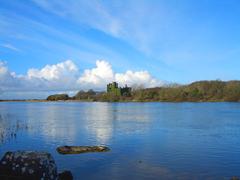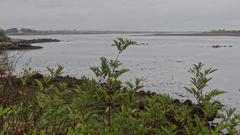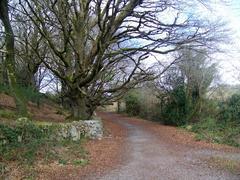
Spanish Arch Visiting Hours, Tickets, and Historical Sites in Galway
Date: 18/08/2024
Introduction
The Spanish Arch in Galway, Ireland, is a site of immense historical and cultural significance. Constructed in 1584 as part of Galway’s medieval city walls, this landmark has stood the test of time, witnessing centuries of the city’s evolution. The Arch, originally known as Ceann an Bhalla or “Head of the Wall,” was built under the mayoralty of Wylliam Martin to protect the bustling quays that were crucial for trade and commerce (This is Galway). Despite its name, the Spanish Arch has no direct historical connection to Spain. However, its name likely stems from Galway’s close trading relationship with Spain during the medieval period (Wikipedia).
Today, the Spanish Arch is a vibrant part of Galway’s cultural and social life, often filled with the sounds of buskers and the laughter of both locals and tourists. Situated on the left bank of the River Corrib, where the river meets the sea, it offers stunning views and an atmosphere rich in history. This guide aims to provide comprehensive information for anyone planning to visit the Spanish Arch, covering its historical background, visitor tips, nearby attractions, and more.
Table of Contents
- Introduction
- Historical Background
- Modern-Day Significance
- Visitor Information
- Cultural Depictions
- Galway City Museum
- Visitor Experience
- FAQ
- Conclusion
Historical Background
Origins and Construction
The Spanish Arch, known in Irish as An Póirse, is a significant historical structure located in Galway, Ireland. It was constructed in 1584 during the mayoralty of Wylliam Martin, the 34th mayor of Galway. The Arch was part of an extension to the city’s medieval wall, which dates back to the 12th century. This extension aimed to protect the city’s quays, which were vital for trade and commerce. The wall spanned from Martin’s Tower to the riverbank, providing a fortified barrier against potential invaders and looters (This is Galway).
The Name “Spanish Arch”
Despite its name, the Spanish Arch has no direct historical connection to Spain. The original name of the structure was Ceann an Bhalla, which translates to “Head of the Wall.” The name “Spanish Arch” likely emerged due to Galway’s close trading relationship with Spain during the medieval period. This misnomer has persisted over the centuries, becoming the commonly accepted name for the landmark (Wikipedia).
Architectural Features
The Spanish Arch is one of two remaining arches on the Ceann an Bhalla. The other is the Caoċ Arch, or “blind arch.” These arches were integral to the city’s defenses, allowing controlled access to the quays and the harbor. The construction of the arches was a strategic move to protect merchant ships from looting and to facilitate the movement of goods and people between the town and the quays (This is Galway).
The 1755 Tsunami
One of the most dramatic events in the history of the Spanish Arch was its partial destruction by a tsunami in 1755. This tsunami was generated by the Lisbon earthquake, one of the most powerful earthquakes in recorded history. The natural disaster caused significant damage to the structure, altering its original form. Despite this, the Arch has remained a prominent feature of Galway’s landscape (Wikipedia).
The Long Walk and Eyre Family
In the 18th century, the Eyre family of Eyrecourt, County Galway, played a crucial role in the development of the area around the Spanish Arch. They extended the quays and created a promenade known as The Long Walk. This development included the construction of the arches to provide access from the town to the new quays. During this period, the Arch was likely referred to as the Eyre Arch, reflecting the family’s influence on the area (Wikipedia).
Modern-Day Significance
Today, the Spanish Arch is a vibrant part of Galway’s cultural and social life. The area around the Arch is often filled with the sounds of buskers, the laughter of locals and tourists, and the squawk of seagulls. It serves as a reminder of Galway’s medieval heritage, with the stones of the Arch steeped in history. The Arch is located on the left bank of the River Corrib, right where the river meets the sea, on the edge of the lively Latin Quarter (This is Galway).
Visitor Information
Visiting Hours and Tickets
The Spanish Arch is accessible to the public at all times, and there is no entrance fee, making it an ideal spot for a budget-friendly visit. However, visitors are encouraged to check current visiting hours for nearby attractions like the Galway City Museum, located just behind the Arch.
Special Events and Tours
Throughout the year, various events and festivals take place around the Spanish Arch, adding to the vibrant atmosphere. Guided tours are available, providing deeper insights into the historical significance of the Arch and its surroundings. Be sure to check local listings for upcoming events during your visit.
Travel Tips and Nearby Attractions
The Spanish Arch is easily accessible from the city center. Visitors can enjoy a leisurely stroll along The Long Walk or explore the nearby Latin Quarter, known for its shops, restaurants, and lively nightlife. The proximity to the River Corrib also offers opportunities for beautiful photographs, especially during sunset.
Cultural Depictions
The Spanish Arch has also made its mark in popular culture. It has appeared in several media works set in Galway, including the 1957 film “The Rising of the Moon.” This highlights the Arch’s enduring presence in the cultural and historical narrative of the city (Wikipedia).
Galway City Museum
Until 2006, part of the Spanish Arch housed the Galway City Museum. The museum has since moved to a new, dedicated building located just behind the Arch. This relocation has allowed for the preservation and display of Galway’s rich history and heritage in a more expansive setting (Wikipedia).
Visitor Experience
For visitors, the Spanish Arch offers a unique glimpse into Galway’s past. The area is a popular spot for both locals and tourists, providing an ideal location for leisure activities such as sunbathing, people-watching, and enjoying the local music scene. The proximity to the Latin Quarter means that visitors can easily explore the vibrant cultural and social life of Galway while taking in the historical significance of the Arch (This is Galway).
FAQ
What are the visiting hours for the Spanish Arch?
The Spanish Arch is accessible to the public 24/7, but it’s best to visit during daylight hours for safety and better visibility.
Are there guided tours available at the Spanish Arch?
Yes, guided tours are available and provide valuable historical insights. Check local tour operators for schedules and availability.
Is there an entrance fee for the Spanish Arch?
No, the Spanish Arch can be visited free of charge.
What nearby attractions are worth visiting?
The nearby Latin Quarter, Galway City Museum, and The Long Walk are all worth exploring.
Conclusion
The Spanish Arch is not just a historical structure but a living part of Galway’s cultural fabric. Its origins, architectural features, and the events that have shaped it over the centuries make it a must-visit landmark for anyone interested in the rich history of Galway. Plan your visit today and immerse yourself in the vibrant atmosphere of this iconic site. For more updates and travel tips, download our mobile app Audiala, check out other related posts, or follow us on social media.
References
- This is Galway. The history of the Spanish Arch. This is Galway
- Wikipedia. Spanish Arch. Wikipedia
- Visit Galway. Spanish Arch. Visit Galway
- Ireland Before You Die. Spanish Arch in Galway. Ireland Before You Die
- Galway Tourism. The Spanish Arch. Galway Tourism
- Ireland Travel Guides. Spanish Arch Galway. Ireland Travel Guides
